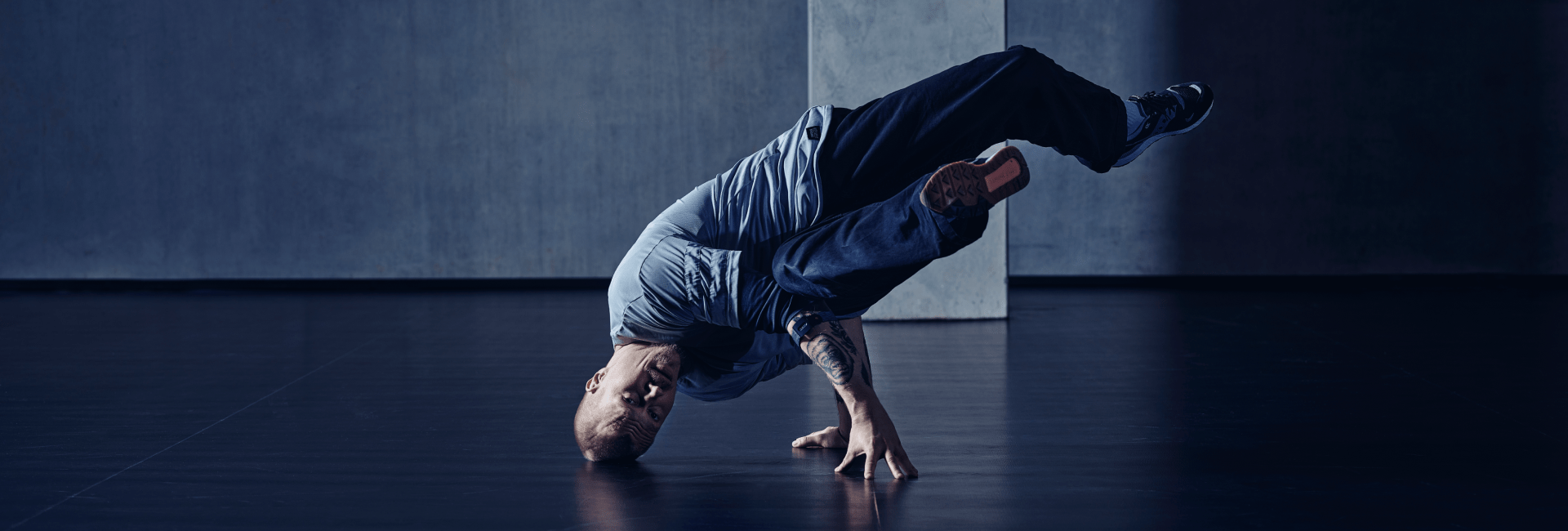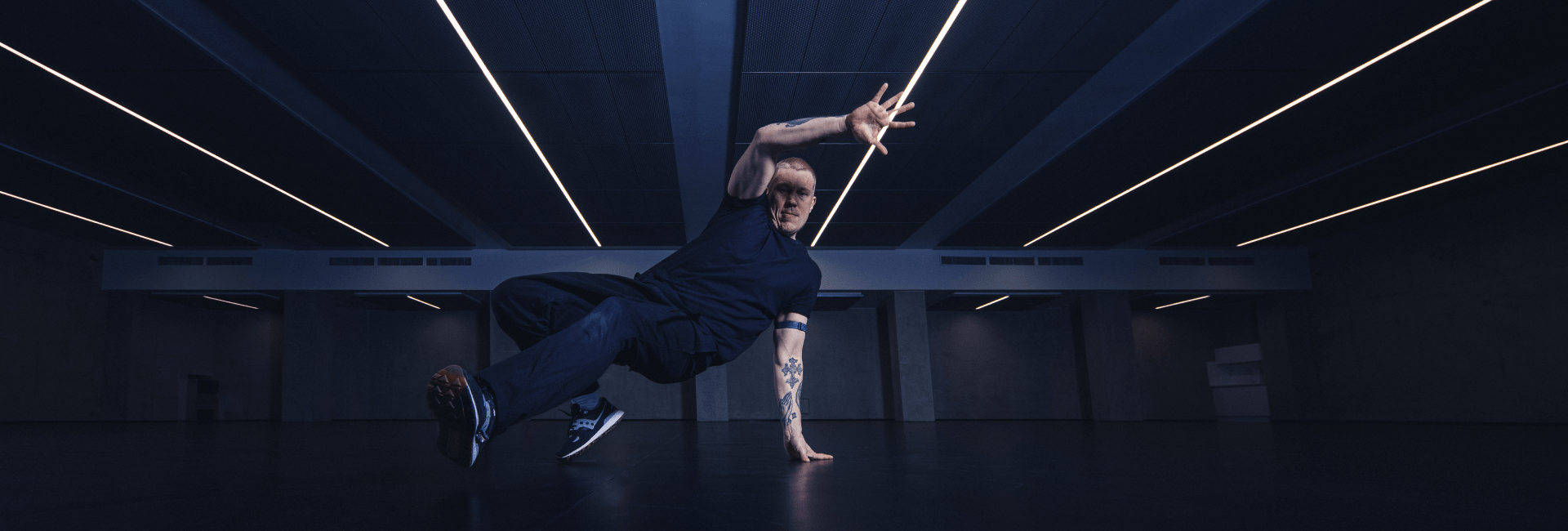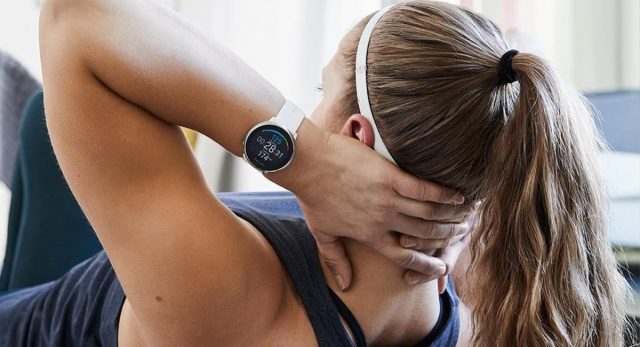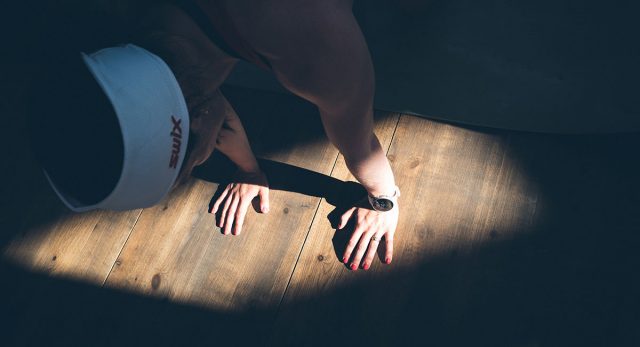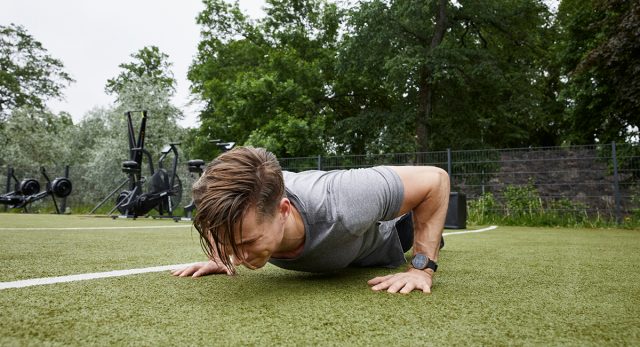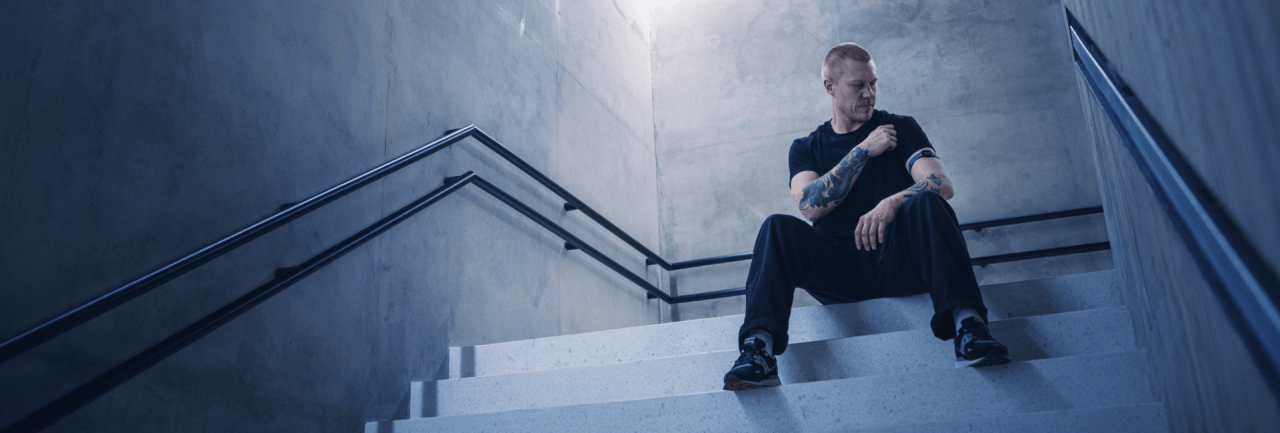
Breakdancing is one tough form of a dance workout. In fact, it’s so challenging that the International Olympic Committee recently decided to add it as a sport for the 2024 Summer Games in Paris.
We caught up with breakdancer Johannes Hattunen (aka Hatsolo), a member of the Finnish Olympic team who features on the Polar Verity Sense video, about his passion for ‘breaking’, how demanding it is on dancers’ bodies, and why strength and mobility exercises are essential for avoiding injuries.
What is breakdancing?
Breakdancing was born in 1970s New York. DJs would add an extended drum break in records, which would make people dance like crazy. This is where the idea of ‘breaking’ comes from – they would go so nuts that they would ‘break’.
In time, it developed into a dance battle between rival crews. This is what separates breaking from other types of dancing. The competition is real: it’s a battle for respect. It’s also about artistic expression instead of performing certain moves and scoring points.
Breakdancing combines creativity and fitness. It’s about reacting to the music, being free, and confident to express yourself. The artistic element is what makes it so different from most other sports.
This creativity is also why being a bit older can be an advantage because you can develop your own style and expression. With something like gymnastics, there are mandatory moves that you do again and again. This is why their champions are so young.
Breaking is about expressing a rawness that originally comes from the streets. It will be interesting to see how that fits into something like the Olympics now.
Which key areas of the body does breakdancing work with?
There is no set way to breakdance as the focus is on creating your own style. So it’s important to understand what your strengths are and work with these.
A strong core is essential. It keeps the rest of your body safe, especially your spine. When you’re doing lots of crazy movements, it’s important to make sure your core is engaged and you’re protecting yourself from injury.
After that, your strengths are very personal. If I’m running a training program for dancers, I’ll really study each of them first to find out where their individual strengths are. For me, it’s in my legs – I use them a lot in my breaking.
Other dancers have a lot of strength in their upper body, so their style will involve a lot of resting weight on their hands. I’m taller and heavier than most breakdancers, so it takes more effort to lift my whole body up on one hand, so I work to my other strengths instead.
Mobility and flexibility are also elements that vary from dancer to dancer. Some breakers are yogi-level flexible so they’ll use it to their advantage. I’m not crazy flexible but I’m very mobile. I can move really fast so I use this as one of my strengths.
Breakdancing is a really intense cardio session, like HIIT. One individual round (or set) lasts for 30-60 seconds. A battle will involve three to five rounds, so during a whole competition, you could end up doing 20 rounds. That’s a pretty intense dance workout if you go all out in each set, as I do.
Over the years, I’ve learned how to control my breathing, which really helps when I’m doing a battle. It’s a lot like the way people use breath control in cold water swimming.
Take us through your training routine
I usually do dance training about five or six times a week. In addition to this, I’ll also hit the gym three or four times a week.
In the lead up to a competition, I’ll focus on doing a lot of speed and explosive training. These dynamic mobility exercises are what keep me moving like a cat. In the off-season, I’ll focus more on building up my basic strength and endurance.
Every morning, I start the day with some light stretching and practice a new move. I use videos online to help me create strategies for executing that move and work on the strength and mobility exercises I need to use that specific part of the body. This means when I do my dance workout later, I already have an approach for adding this move to my practice.
During my dance training, I’ll start with a warm-up, then jam a bit. I follow this up by running some drills on moves I’m learning and then get into practicing my hardest moves. Whichever ones take my heart rate up to the max, I’ll leave till last. I’ve learned how essential rest time is after practicing those intense moves.
What are the most common injuries in breakdancing?
Joints and knee injuries. You really have to be mindful of not straining, spraining, or damaging your joints when breakdancing. It’s easy to throw your body into moves without preparing for the impact it may have on you. It’s important to do strength and mobility exercises to support a robust and functional body.
Like many dancers, I had a lot of injuries by the time I was 22. Learning to take care of my body became essential – otherwise, breakdancing would have been all over for me. The upside was that by doing this, my breaking improved as well.
Most of the people I was breakdancing with when I was younger can’t do it anymore. They have injured their knees or other joints. The main reason I am still able to dance is because of the conditioning and strength training exercises I did to support my body.
Breakdancing is Starting to Receive recognition, How does it feel?
It’s pretty awesome. 22 years ago, when I started breaking, I would never have dreamed that one day this would lead me to compete at the Olympic games. I’m really excited.
Currently, we’re starting to build the program towards the Olympics. The media has been super interested in how things are developing.
I’m working hard on creating totally unseen and new moves right now. That’s critical if you want to be successful. In breaking you always need an element of surprise and innovation. New moves take time to develop and become natural, which is why it’s important to start it already years before the Games.
I’m 35 years old now, which means I’ll be 39 at the games in 2024. That’s quite old for any professional sport, especially breakdancing. Most of the top dancers are in their early 20s. I think the reason I’m still doing so well is because I’ve taken care of my fitness.
How could other athletes benefit from a Dance Workout?
Creativity. Playfulness. Not being so serious all the time. Letting go of control. Being loose and free.
I think many people are very set in their training styles, exercising in the same ways over and over. If you find your energy levels are waning, then breaking out of your routine and have a dance workout would be hugely beneficial.
With breakdancing, you don’t have to plan your work out or have goals. Let go of the idea of sets and reps. Dancing is all about having fun and feeling good and still get the results.
In fitness, we’re always trying to copy others, taking advice, and following set ideas. However, what works for one person doesn’t necessarily work for others.
Breaking is all about creating your own way. When I coach my students, I always encourage them to find their own mentality and approach.
How did you start breakdancing?
The first disco I ever went to was when I was 14. At one point, I joined a breakdance ‘cypher’ (circle of people gathered around the breakers) and watched my friend Olli do a head slide. It was the coolest thing I’d ever seen.
Later when the music changed and everyone started slow dancing, I was too shy to approach any of the girls. So I stood on the side, next to Olli who was doing a strong B-Boy stance (arms crossed in front with hands under each armpit while standing with your head tilted slightly back). I noticed girls were coming up and paying him attention, so I decided then that I should get into breakdancing.
Once I started dancing, I slowly fell in love with breaking. Learning my own moves and working hard at improving my style became a great way for me to better myself.
Have You Ever quit breakdancing and made a comeback?
I have been through a journey with my attitude and mindset with breakdancing over the past 20 years.
About a decade ago, I was ready to quit competing.
I was lucky enough to travel around the world dancing, but I was also financially dependent on it which was killing my passion for it.
I stepped back from dancing for a living and started working as a motivational speaker. I also opened my gym.
True inspiration comes from inside.
Now I can dance if I want to, which is the key for me. It’s my profession but I don’t have to do it for money. I still love to dance and want to compete.
Dancing is the number one thing for me.
For a lot of athletes, when they quit, they’re done and don’t come back. Once motivation is gone, there’s no going back. I faced this problem as well but I was determined to get my passion for dancing back.
A couple of years ago, I wrote a book about my personal journey with breakdancing. Like so many other sports memoirs, I talked a lot about what I had sacrificed along the way to get where I was.
However, I slowly began to realize I hadn’t sacrificed anything. It was always a choice. I danced because I wanted to dance.
I didn’t do it for glory.
I did it because it’s my passion.
That was a huge change in my mindset, which helped me understand that I work hard because I want to.
If you liked this post, don’t forget to share so that others can find it, too.
Or give it a thumbs up!
I like this article
Please note that the information provided in the Polar Blog articles cannot replace individual advice from health professionals. Please consult your physician before starting a new fitness program.
